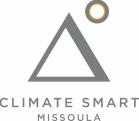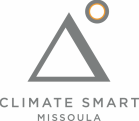2021 International Energy Conservation Code (IECC)
Montana is currently enforcing the 2018 International Energy Conservation Code. The adoption of the most recent version, the 2021 IECC with associated above-code appendices (Solar Ready + Commercial Zero Code Appendix), is up for adoption at the state-level this fall. Once it passes through the Montana Code Council, local jurisdictions will have the opportunity to adopt new building codes in full at the city-level.
***ADVOCACY OPPORTUNITY***
Public Hearing on Proposed Building Code Rule Amendment: MAY 6, 2022 – 1:00 PM
|
The Montana Building Code Program will hold a public hearing on MAY 6 @ 1:00 via zoom regarding the proposed amendments of administrative rules for the purpose of adopting current building codes and elevator safety codes. It's CRITICAL that the proposed updates and associated above-code appendices to the state building energy code get passed this cycle.
If you'd like to tune in or advocate in support of these updates, you may submit public comment orally or in writing at the hearing. Written data, views, or arguments may also be submitted to the Building Codes Program, 301 South Park Avenue, P.O. Box 200517, Helena, Montana 59620-0517, by facsimile to (406) 841-2050, or e-mail to [email protected], and must be received no later than 5:00 p.m., May 13, 2022. |
Meeting Infoa. Join Via Zoom: https://mt-gov.zoom.us/j/81929206197
Meeting ID: 819 2920 6197, Passcode: 573426 -OR b. Dial by telephone: +1 406 444 9999 or +1 646 558 8656 Meeting ID: 819 2920 6197 Passcode: 573426 |
Why it Matters
Key changes to the 2021 IECC improve energy efficiency, encourage greater flexibility in design and construction, reduce greenhouse gas emissions, and provide clarification and usability of the code. Communities that regularly adopt the IECC save money for residents and businesses and improve community health and resilience.
|
Energy Efficiency, Affordability, and Occupant Health
The 2021 International Energy Conservation Code represents a 9.4% site energy savings improvement and an 8.7% improvement in carbon emissions for residential buildings relative to the 2018 IECC, saving homeowners an average of $2,320 over the life of a typical mortgage.
Prioritizing energy efficiency and renewable energy production measures supports clean energy access, decreases the energy burden for low-income ratepayers, and encourages the use of high-performing building systems that are becoming increasingly cost-competitive with more traditional means of construction. Although the initial cost of construction under high-performance building codes can be steeper than standard-code construction (a margin that is decreasing annually), the long-term health and financial benefits are undeniable; they will simply cost less to operate and own and occupants will benefit from the improved air-quality and comfort measures. |
Aligning with Community Decarbonization Goals
The City of Missoula and Missoula County have set ambitious clean electricity and greenhouse gas emission reduction targets (100% CE aimed at decarbonizing our community. Changing the way we power our buildings is an urgent part of the community’s broader clean energy transformation and a critical path to increasing community energy resiliency. In order to meet our climate goals, Missoula must reduce total building emissions 15% by 2030.
Governments simply cannot meet their GHG reduction goals without having building codes that align with those goals. |



